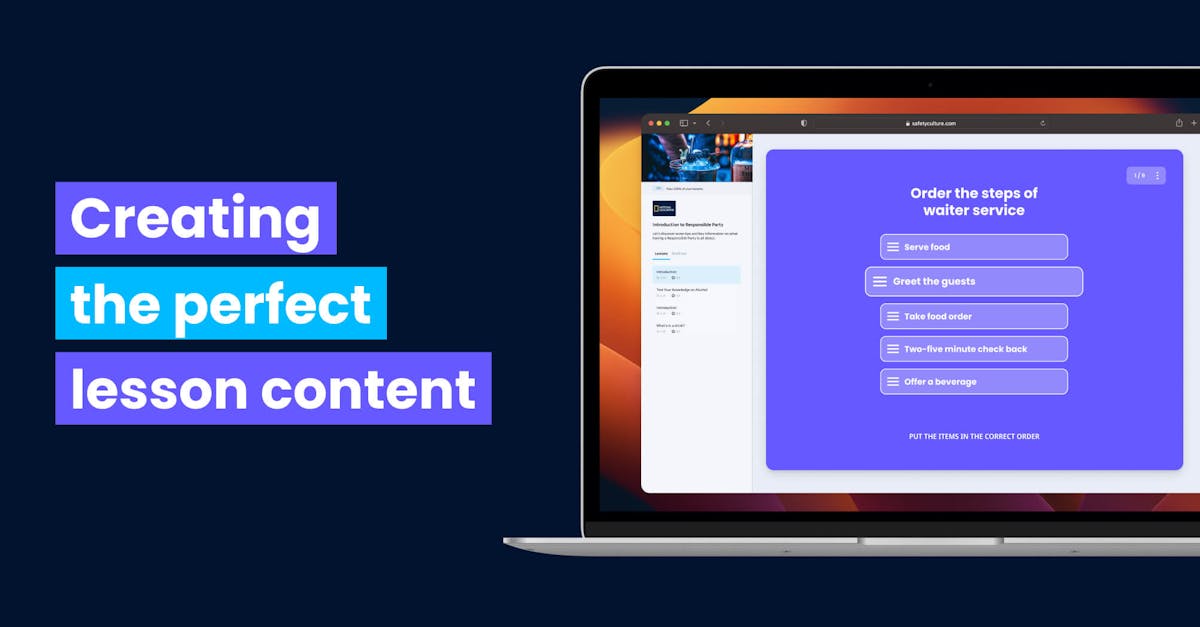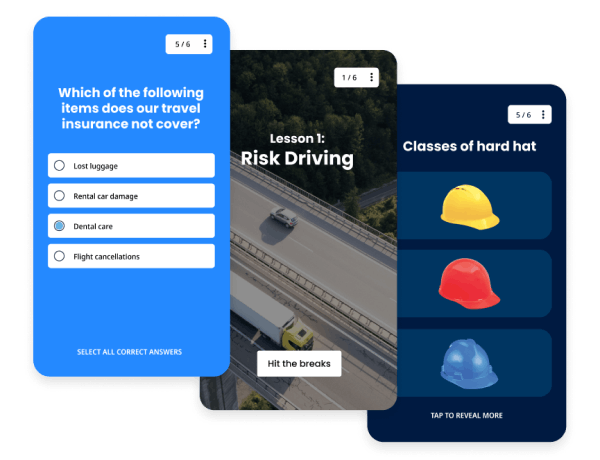Creating the perfect lesson content

Creating the perfect lesson content can be overwhelming, especially when you're starting from scratch. But fear not, because with a little guidance and the right tools, you can create a lesson plan that is both engaging and effective. In this article, we'll explore some key elements and strategies that can help you create the perfect lesson content.
What is lesson content?
Lesson content acts as the backbone of any learning experience. It gives the necessary information and guidance for learners to grasp new concepts, acquire skills, and broaden their understanding of the subject matter. Well-designed and engaging lesson content lays the foundation for effective teaching and learning.

Sign up with EdApp today and start creating the perfect lessons for your learners!
What does your lesson content need?
In today's fast-paced and ever-evolving world, the demand for high-quality lesson content has never been greater. Whether you’re an educator or a corporate trainer, it’s essential to understand what your lesson content needs in order to effectively engage and educate your learners.
Here are some things to consider:
- Relevance - your lesson content should be tailored to meet the specific needs and interests of your target audience. By understanding their background knowledge, learning objectives, and preferred learning styles, you can create content that resonates with them on a deeper level.
- Clarity - your lesson content should be presented in a clear and concise manner, making it easy for learners to understand and follow along. Avoid jargon or complex language that may confuse or overwhelm your audience. Instead, strive for simplicity and use relatable examples or visuals to enhance comprehension.
- Interactive elements - Incorporating interactive and engaging elements such as quizzes, games, discussions, or hands-on activities can foster active participation and enhance the overall learning experience. Additionally, by encouraging collaboration and giving opportunities for reflection and application of knowledge, you can create a more dynamic and impactful learning environment.
- Adaptability - when your lesson content is adaptable, it remains relevant in an ever-changing landscape. Stay updated with current trends and advancements in your field of expertise so that you can continuously refine and update your materials accordingly. Embrace new technologies or pedagogical approaches that can enhance the delivery of your lessons.
By understanding what your lesson content needs - relevance, clarity, engagement, and adaptability - you can create impactful learning experiences that inspire and empower your learners with valuable knowledge and skills.
Introducing your lesson content
The first step in creating lesson content is to introduce your topic. This is done clearly by creating lesson introductions outlining the purpose of the topic along with an overview of the main points before diving in.

To provide some expectations around your learning content, this introduction should simply describe the scope of the material which will be presented to your learners. To achieve this, start by thinking about the context of your lesson.
Within your topic, outline the main points that you’re delivering, what you want your learners to walk away with, and how they might apply the knowledge they’ve gained. Once this is determined, you’re ready to introduce your lesson and ultimately deliver the best transformative learning experience possible for your audience.
Ideas for starting a lesson
Aside from introducing your topic to provide context and expectations, you have an opportunity to pique your teams’ attention. From narration to imagery and interactive slides, EdApp offers over 80 templates so you can easily wow your employees with a beautiful and engaging lesson right from the start. Let’s unpack some options below, all of which are designed to suit a diverse set of learning methodologies.
Using narration for introducing the lesson
If you have a lot to cover, the use of narration can be useful, which enables you to give a slightly longer introduction to your lesson’s content without over-running your slide with text. Similarly, the use of narration can be included throughout your lesson, which can be implemented to recap any key information covered in previous lessons, without spending any slides of your current lesson on topics already covered.
From EdApp’s powerful authoring tool, simply click or drag a new file into your microlesson and see it transform into audio. Whether it’s clearly covering information, verbally exploring concepts more holistically, or accommodating auditory learning styles, applying narration to your lessons can provide a wealth of benefits.
Introduce the lesson content with images
Whether your learner is visual or not, the use of images within learning content is important. Studies show that learners are more likely to believe findings when they’re accompanied by images. It also promotes critical thinking, giving your learners the opportunity to accelerate concepts and increasing the likelihood of applying said content.
Beyond its proven benefits from a learning perspective, the use of images to introduce your lesson content can simply make the start of your lesson more interesting and vibrant than the use of the Title slide.
Presenting lesson content with interactive slides
When using an interactive template for your lesson content on the first slide, it’s recommended to ease in with a simple question that should be easy for your learners to answer. Remember, the objective here is to introduce the learner to the lesson in an interesting way, not to test them on their knowledge.
EdApp boasts over 80 intuitively-designed templates for you to choose from, and certain interactive templates work best for introducing the topic of the lesson to “wake the learner up”. For example, you can use Multiple Choice: Image to get the learner to select the product they are learning about in today’s lesson. Similarly, you can use any True or False template variant on the first slide, using the takeaway to introduce the content.
Author
Gabrielle Rivera
Gabrielle is an eLearning content writer for EdApp, a microlearning solution designed for today's digital habits. She creates content about cutting-edge learning technologies and resources to help companies deliver great training experiences. When not absorbed in writing, she spends her time playing video games and reading books.
